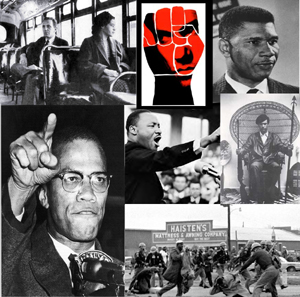|
Fiction
Growing Up White in the Sixties
a fictional memoir
|
Paralleling the
turbulent civil rights era, GROWING UP WHITE IN THE
SIXTIES is the coming-of-age story of Steven Abrams as
he learns how prejudice affects the people he loves.
There are three major
divisions to the book. Early chapters introduce readers
to Steven's grammar school years, living in Los Angeles.
|
 |
Five year old Steven is
introduced in "Hoppy, Gene and Roy." He meets Marco, an older
Hispanic man who symbolizes the childís love of cowboys. Also
representing wilderness, Marcos launches Steven on the road to
observing the world around him. This is where Stevenís first
experiences with prejudice occur.
The story of Stevenís immigrant
parents and their reasons for coming to America are told in "My
Parents." He rides a bus in "Charmed," encountering a black man
who scares Steven's mother. He sees that circumstances make, but
dignity rescues, victims of prejudice. This unifying idea
continues in "Spicks and Wops," as Steven observes two kids
turning prejudice upon themselves to expose the futility of
hatred.
"Assassination" examines a
class of sixth grade students who dedicate a tree honoring
President Kennedy. Following the Watts riots, Steven's parents
exile him to the city of Eureka. In "Uncle George," Steven sees
that bias can also be directed at people regardless of race.
Steven's teen years move away
from direct contact with bigotry to more subtler forms of
exclusion.
Camilla is the most notable of
Stevenís three close friends. He meets her in "Dreamworld" and
"What I Learned About Myself This Summer." Steven joins a youth
group on a summer-long wilderness excursion. The trip ends in
death and the students unknowingly witnesses a murder. The
suggestion of sexual abuse in "What I Learned," shadows the
suggestion that events in youth influence later decisions in
life.
A distraught Camilla introduces
Steven to sex during "Crossing Lines." He doesnít realize that
Mikey, Camilla's overprotective younger brother, has witnessed
the act until the boys present an essay assignment in class the
next day.
Steven and Rob are outside the
hotel where Robert Kennedy is murdered in "Brothers."
Overwhelmed by events, he reacts to another schoolmate who
celebrates the separateness of race.
After a car wreck, "The
Funeral" examines the feelings of teenagers who don't comprehend
deathís affects on them.
A summer camp counselor job
leads to "St. Elmo's Fire." Steven is one of The Professors
who is called upon to interpret natural history. An
electrical storm involves them in the atmosphere in a way they
never imagined. "Be Prepared" is the humorous story of a broken
dishwashing machine, the affects of ingesting too much soap and
an entrepreneurial kid named Kenji.
Steven and his friend Rob play
hookie from high school to watch some hang gliders. They learn
in "Sky Pilot" that knowing what to do isn't always enough to
save someone's life.
Misplaced marijuana exposes the
growing estrangement between Steven and his parents in "Dope."
"It Could Happen to You"
reveals Steven's evolving awareness that the adult world isn't
benign. On a cross-country hitchhiking trip with Paul, the boys
are accepted by the race and class they've been taught to
suspect. Meanwhile, Steven's parents gloat over a story their
friend tells about surviving a mugging. The power of words to
hurt and destroy is obvious.
With "Money," Steven is a
college freshman helping with a mountain climbing demonstration
at the local NAACP fund raiser. The benefactors are white and
bleeding heart liberal Steven feels there should be a kinship
between them all. Heís shocked to discover otherwise.
A rose and a lab rat in "No
Difference" teach Steven to be suspicious when told differences
donít exist between choices.
In the final section of GROWING
UP WHITE IN THE SIXTIES themes of loss and assuming adult
responsibilities predominate.
"When I Grow Old It Won't
Matter What Color I Wear For I Shall Be Old and Nothing Will
Matter" covers his parent's last days and Steven's slow
realization of how deep love is, even if you never see it. Heís
amazed at how parent-child roles reverse.
In the pivotal chapter,
"Growing Up White in the Sixties," Steven embarks on a canoe
trip with Camilla. Tragically heroic, Camilla serves as an
enigmatic symbol of all that is wise and unwise in maturity.
Along Utahís Green River, the meaning of growing up white during
the civil rights era is finally made plain. Steven sees that his
generation grew to maturity during a time when self-growth and
awareness were more important than engaging with the world.
Paradoxically, it's no wonder he never appreciated the times he
lived in - he simply wasnít aware of anything further away from
himself than himself.
Steven reunites with Camilla,
Rob and Paul for a climbing expedition to Nepal in "The Sky is
Falling." His friends are killed when meteor storm forces their
vehicle off the road. Numbed by the loss of his friends, Steven
realizes that life is a circle and he has returned to where he
began. Like the Buddha, his next journey towards truth is about
to begin.
"Ephemeroptera" follows Steven
and Mikeyís hike into the mountains to spread Camilla's ashes.
As the ashes are carried away with the wind, a mayfly crests the
ridge, followed by another and another. Adult mayflies lack a
mouth and cannot eat. They live only a few short hours in order
to reproduce. This metaphor on the transient life of nature
drives home the major theme of GROWING UP WHITE IN THE SIXTIES:
the relationship between existence and awareness.
The
complete manuscript of GROWING UP WHITE IN THE SIXTIES is
available for reading in PDF format
Read
Growing Up White in the Sixties
now
|